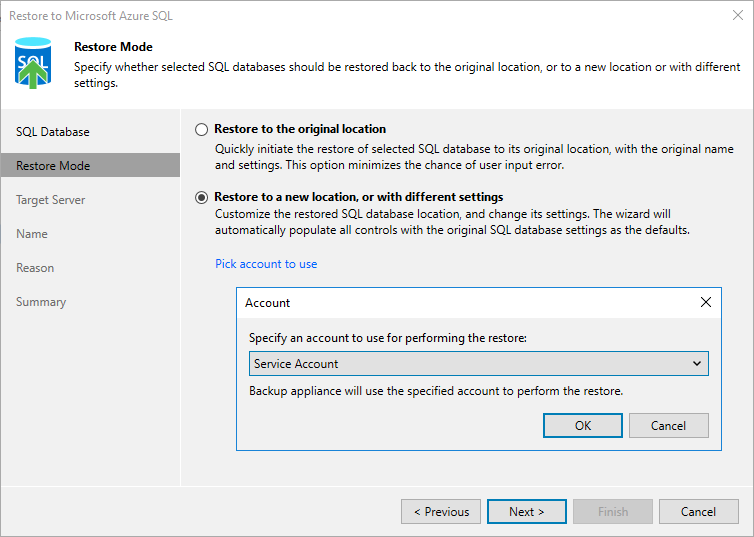 This is an archive version of the document. To get the most up-to-date information, see the current version.
This is an archive version of the document. To get the most up-to-date information, see the current version.Step 3. Choose Restore Mode
At the Restore Mode step of the wizard, do the following:
- Choose whether you want to restore the Azure SQL database to the original or to a new location.
Important |
Consider the following:
|
- Click Pick account to use to select a service account whose permissions will be used to perform the restore operation. For more information on the required permissions, see the Veeam Backup for Microsoft Azure User Guide, section Azure Service Account Permissions.
For a service account to be displayed in the list of available accounts, it must be added to the Veeam Backup for Microsoft Azure appliance as described in the Veeam Backup for Microsoft Azure User Guide, section Adding Azure Service Accounts.
Note |
By default, to perform the restore operation, Veeam Backup & Replication uses permissions of the service account that has been used to protect the source VM, unless the service account was removed from the backup infrastructure. In the latter case, the Restore to the original location option will not be available. |
